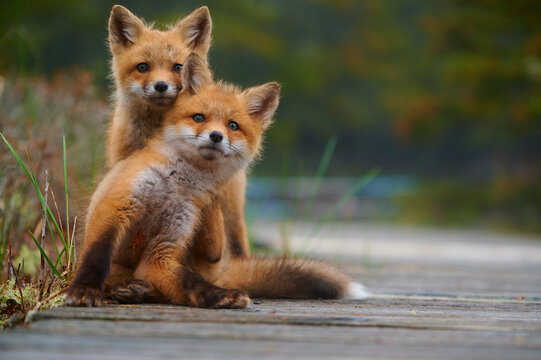
Baby Foxes: A Comprehensive Guide to Their Development, Behavior, and Care
Introduction
Baby foxes, also known as kits or cubs, are captivating creatures that evoke a sense of wonder and curiosity. These playful and energetic animals are a joy to observe, and understanding their unique characteristics and needs is essential for their well-being. This comprehensive guide delves into the fascinating world of baby foxes, exploring their development, behavior, and the proper care they require.
Physical Development
Baby foxes are born blind and deaf, weighing a mere 100-150 grams. Their bodies are covered in a soft, downy fur that gradually transforms into a thicker, more protective coat as they mature. Within the first few weeks, their eyes and ears open, and they begin to explore their surroundings.
As they grow, baby foxes develop rapidly. Their weight increases significantly, and their limbs become stronger, allowing them to become more mobile. By the age of 6-8 weeks, they are fully weaned and capable of hunting small prey.
Behavioral Development
Baby foxes are highly social animals that form strong bonds with their siblings and parents. They engage in playful behaviors, such as chasing, wrestling, and pouncing, which help them develop their coordination and hunting skills.
As they mature, baby foxes become more independent and curious. They begin to explore their surroundings, venturing farther from their den and interacting with other animals. They also develop a keen sense of hearing and smell, which they use to detect potential predators and locate prey.
Vocalizations
Baby foxes communicate through a variety of vocalizations. They emit high-pitched yelps or whines when they are hungry, cold, or in distress. As they grow older, they develop a wider range of vocalizations, including barks, growls, and screams.
Diet
Baby foxes are initially dependent on their mother’s milk for nourishment. As they grow, they gradually transition to a diet of solid food, including small rodents, insects, and fruits. They are opportunistic feeders and will consume whatever prey they can catch.
Habitat
Baby foxes typically live in dens, which can be located in burrows, hollow trees, or under rocks. Dens provide shelter from the elements, predators, and other threats. As they mature, baby foxes may establish their own territories and build their own dens.
Parental Care
Both male and female foxes play an active role in raising their young. The mother fox provides milk and protection, while the father fox hunts and brings food to the den. Baby foxes remain with their parents for several months, learning essential survival skills before becoming fully independent.
Conservation Status
Baby foxes are an important part of the ecosystem, playing a role in controlling rodent populations and maintaining biodiversity. However, some species of foxes are facing threats due to habitat loss, hunting, and disease. Conservation efforts are crucial to ensure the survival of these fascinating animals.
Care for Baby Foxes
In certain circumstances, it may be necessary to care for baby foxes that have been orphaned or injured. It is important to note that baby foxes are wild animals and should not be kept as pets. However, if you encounter a baby fox in need of assistance, here are some guidelines:
- Contact a wildlife rehabilitator: The best course of action is to contact a licensed wildlife rehabilitator who has the expertise and resources to care for baby foxes.
- Provide warmth: Baby foxes are susceptible to hypothermia. Keep them warm by placing them in a box lined with soft blankets or towels.
- Feed them: If the baby fox is not nursing, you can feed them a specialized formula designed for puppies or kittens.
- Stimulate elimination: Baby foxes cannot eliminate on their own. Gently rub their genital area with a warm, damp cloth to stimulate urination and defecation.
- Keep them clean: Baby foxes should be kept clean and dry. Use a soft cloth to wipe away any dirt or debris.
- Provide a safe environment: Baby foxes need a safe and quiet place to rest and recover. Keep them away from potential predators and other animals.
Conclusion
Baby foxes are captivating creatures that play an important role in the ecosystem. Understanding their development, behavior, and care is essential for their well-being and conservation. By respecting their wild nature and providing appropriate assistance when necessary, we can help ensure the survival of these fascinating animals for generations to come.
